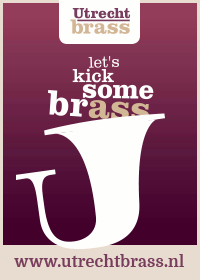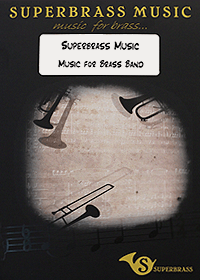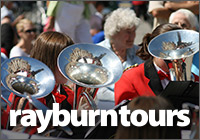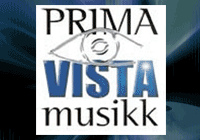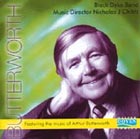 Butterworth – The Music of Arthur Butterworth
Butterworth – The Music of Arthur Butterworth
11-Nov-2001
The Black Dyke Band
Music Director: Nicholas Childs
Doyen Recordings CD130
Playing time: 61.13
Arthur Butterworth remains something of an enigma to the brass band world. Born in Manchester in 1923, he studied at the Royal Manchester College of music, before he became a trumpet player of some considerable note with the Scottish National Orchestra and subsequently the Halle under the guidance of Sir John Barbirolli. His conducting career started with the Huddersfield Philharmonic Society in 1964 and he went on to guest conduct the BBC Northern Symphony, the BBC Scottish and Concert Orchestras.
His compositions included early works for horn in 1954 and his First Symphony in 1957, which was premiered by the Halle and Sir John at that year's Chelthenham Festival. Since then he has written many other notable large scale symphonic works including three more symphonies in 1965, 1979 and 1986 as well as concertos for bassoon, organ, violin, viola, cello, guitar and trumpet. He has also written a Piano Trio (1983) as well as works for choral ensembles and piano.
His works for brass include "Three Impressions" (1968), "Odin" (1986), "Caliban" (1978) as well as this year's "Sinfonia Concertante" – yet his brass music has for the vast part been almost criminally under performed and at times neglected.
Black Dyke and Doyen have put a welcome stop to this, and this seriously impressive recording should we hope bring Arthur Butterworth's brass music back to the forefront where it rightly belongs - for he is one of the most significant British composers of the post war period.
Butterworth's music for brass is vibrantly descriptive in tone and instantly musically communicative. The influences of Ralph Vaughan Williams are clear in his early orchestral works and in his later compositions the influence of Sibelius is clear. However, he has a very clear original voice that is both idiomatic as well as nostalgic whilst his abilities as a transcriber and interpreter are immense.
"Three Impressions For Brass" Opus 36, was written in 1968 and is musical picture of 19th Century Northumberland, which features portraits of "Wylam Colliery" (1836), "Deserted Farm" (1840) and "The Royal Border Bridge, Berwick on Tweed (1850). It is an atmospheric canvas, dark in hue and tone, which evokes memories of darkened landscapes and industrialisation in the first movement, whilst the second has a ghostly quality as the composer portrays a deserted farm and life that has all but been destroyed by the Industrial Revolution that "Wylam Colliery" so powerfully represents. Finally, the third movement symbolises the Victorian apotheosis of progress – the railway and it ceaseless drive into every corner of the country as the arteries and veins of the Industrial Revolution itself. It is a very powerful work indeed.
"Passacaglia for Brass Op. 87 on a theme of Brahms is a superb work of musical interpretation.
Based upon Bach's church cantata no 150, "For Thee Lord, do I Yearn", Brahms supplanted it into the last movement of the Fourth Symphony in E Minor in the form of a passacaglia (a ground bass repeated phrase of generally eight bars in length). Butterworth then takes this further and explores this passacaglia by invertion and impressing the form of a chorale upon it. Only at the very end of the piece does the theme appear in its powerful original musical quotation.
This is perhaps the most accessible of the works on display and is a superb achievement in brass scoring. The power and depth of colour of the passacaglia are realised in full and the work generates immense excitement as it build to its climax. It's wonderful stuff.
"Sinfonia Concertante" Opus 111 for Tenor Horn and Baritone was written in 2000 and received its world premier at the 2001 Harrogate Festival where Black Dyke and the two featured soloists, Lesley Howie and Robert Blackburn gave the inaugural performance.
It is symphonic in character and takes into account the specific timbres that both instruments create within the band and as a duet. The first of the four movements is a "Pastorale" which establishes the nature of the work as a whole and is archaic and modal in flavour. The second movement entitled "Scherzo" is witty and lively and makes extensive demands on the technical boundaries of the instruments and players. The third is entitled "Night Music" and is dark in tone and picture, whilst the fourth is a lively "Rondo Alla Caccia" which encapsulates the liveliness and lightness of touch that both instruments are rarely required to undertake.
It is a substantial work that is given a performance of the very highest class by two fine soloists, and is an important addition to the repertoire.
Finally, perhaps the most important piece of transcription for brass since Elgar Howarth undertook Mussorsky's "Pictures at an Exhibition". The "Variations and Fugue – On a Theme by Handel" Opus 24 is an immense achievement and one that should be celebrated.
Brahms took the original theme by Handel (which was a simple two part eight bar aria) and formed them into a theme and twenty-five variations – all symphonic in design, but all growing out of the textures, rhythms, melodic motifs and general characteristics of the variations that proceed them. Brahms wrote them in and around 1861 for Clara Schumann as a birthday treat.
Denis Wright first muted the brass transcription as far back as 1935, but it wasn't until the 1970's that Butterworth, who had conducted the piece several times in the orchestral version by Edmund Rubbra decided to transcribe it for brass band. The result of Butterworth's work is this immense and superbly crafted transcription.
Although variations 15 and 18 are omitted in order to make the work practical for brass, it is a transcription of heroic proportions, virtuoistic and challenging, yet always musically inventive and enjoyable. Arthur Butterworth has scaled a work of immense complexity and brought it to the brass band in a form that is both accessible and hugely listenable.
Black Dyke performed it at the recent Best of British Brass Concert following the 2001 British Open Championships to widespread approval, and it was rumoured to have been considered as a possible test piece selection for the Championships itself. You can hear why.
This Butterworth recording by Doyen is perhaps for us the most important CD release of the past year or more – a serious recording of music of considerable note. Black Dyke is on fine form throughout and the soloists play with immense style and musicianship in the "Concertante". The programme notes are well prepared and thorough and the quality of the recording is first rate.
A highly recommended release for the serious music listener – let's hope there are more to follow of Butterworth's work.
What's on this CD?
|
1-3 |
Three Impressions for Brass Op. 36 |
11.00 |
|
4 |
Passacaglia on a Bass Theme of Brahms Op. 87 |
11.55 |
|
5-7 |
Sinfonia Concertante Op. 111, Soloists: Leslie Howe and Robert Blackburn |
15.55 |
|
8 |
Variations & Fugue on a Theme of Handel Op. 24, Brahms, Trans. Butterworth |
21.05 |
|
|
Total playing time |
61.13 |




